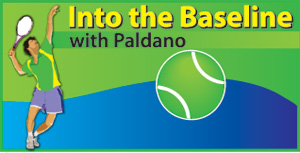Nadal wins for the 9th time
On clay, Spain reigns supreme. The ‘king’ among the Spaniards is Rafael Nadal. Even after nursing himself for a number of injuries in the last three years, he has not withdrawn and it paid off last week. He won his ninth Monte Carlo title last Sunday although none of the matches came easy to him. What won is the ‘comfort zone’ he exhibits on clay. He gets 95 percent correct on coordination and timing even in extreme situations and instantaneous reading of opponents’ shots, give him time to react. One aspect which always fascinates me is his ability to reach a drop shot even when he is right next to the linesman at the back of the court. That is covering over 15 meters in a fraction of a second.
 Nadal’s opponent in the final of the Monte Carlo event was Frenchman Gael Monfils. Monfils played a ‘gallant game’ and had the edge to win the first set many times. However, he won the second set comfortably. Missing those opportunity to win the first set cost him the match. This is the best Tennis Monfils played in years. He entertained the spectators with ‘sizzling’ strokes and fluent movement to cover court in the first two sets but completely ran out of motivation and steam in the third.
Nadal’s opponent in the final of the Monte Carlo event was Frenchman Gael Monfils. Monfils played a ‘gallant game’ and had the edge to win the first set many times. However, he won the second set comfortably. Missing those opportunity to win the first set cost him the match. This is the best Tennis Monfils played in years. He entertained the spectators with ‘sizzling’ strokes and fluent movement to cover court in the first two sets but completely ran out of motivation and steam in the third.
Shocker
Of all the players, no one expected the world’s number one to be out of the first of the majors of the European season in the early rounds. That is exactly what happened. Czech Republic’s left handed Jiri Veseley, I am sure no one has heard much of his existence, was the former junior world’s number one. Since then at 22 years, he has been trailing to be just another player ranked 55 in the men’s world ranking. This means he has been consistent but has not been a ‘giant killer’. Until in Monte Carlo second week, he changed that impression by beating none other than the world’s number one Novak Djokovic so much so that in the third set, Veseley was the better player on court with a good margin.
The excitement and exhaustion was too much for Veseley beating Djokovic. In the very next round the experienced Gael Monfils made use of Veseley’s cautious ineffective play and won easily.
‘Doping’ – player education and declaration
Big Tennis news of this year has been the ‘doping’ scandal, unfortunate but real. It has made Meldonium a declared performance enhancer in sports, famous overnight. Latvian Ivars Kalvin developed Meldonium for medical use first in the 70s. Unfortunately since then it has been misused globally. There are only 104 days until the 13th April in 2016. Amazingly 172 sports persons have been tested positive during this period for Meldonium. That amounts to more than one player a day. Medical experts are not buying the explanation that Meldonium is being prescribed to top athletes as approved treatment. A good number of athletes found guilty may be just following orders and requests of people with whom they train. So the way out of ‘doping’ menace could be in ‘player education’.
In this light, leaving the history and case studies aside, it is time that something is done to save young athletes from being exposed to ‘doping’ even accidently or by outside design. Educating players and protecting players will have to play a big role from now on. If not, the future of sports will be at stake.
I looked into to find out how long the effect of Meldonium stays in the body. It was revealed that a well known athlete had traces of Meldonium in his body even after one year. This means there is a grave danger of an innocent player being the victim of circumstances. Right now, the fight against ‘doping’ has intensified. Tennis players like Roger Federer, Andy Murray, Rafael Nadal and past players American Pam Shriver, John McEnroe has expressed their sentiment of concern. Andy Murray is supposed to have said some players do not seem to get tired at all and he was wondering how come?
It is coming to light that some ‘big names’ in sports in the past had a ‘doping’ history and were ‘officially’ not revealed. Their names will come out as a shocker to many. The new policy of names been made public will curtail ‘doping’ to a good extend to safeguard reputations. ‘Compulsory Player declaration’ of the intake of the substances may be another method of prevention.
Image of a player
There are still many players who are clean. They are the intelligent ones who know what long term damage ‘doping’ can have on the body. The trend of player performance this year will reveal a lot of the ‘doping’ history of players in the recent past. However as the German former top ten and multiple Grand-Slam winner Boris Becker, who is at present Djokovic’s coach says, ‘a player is innocent unless proven guilty.’ Eventually ‘doping’ will be taken out of Tennis. For this to happen, Tennis must survive this ‘clean up’ phase. The speed of recovery will be the responsibility of everyone in Tennis and not the few who are in control.
George Paldano, Former int. player; Accredited Coach of Germany; National, Davis-Cup, Federation Cup coach–. georgepaldano@yahoo.com


